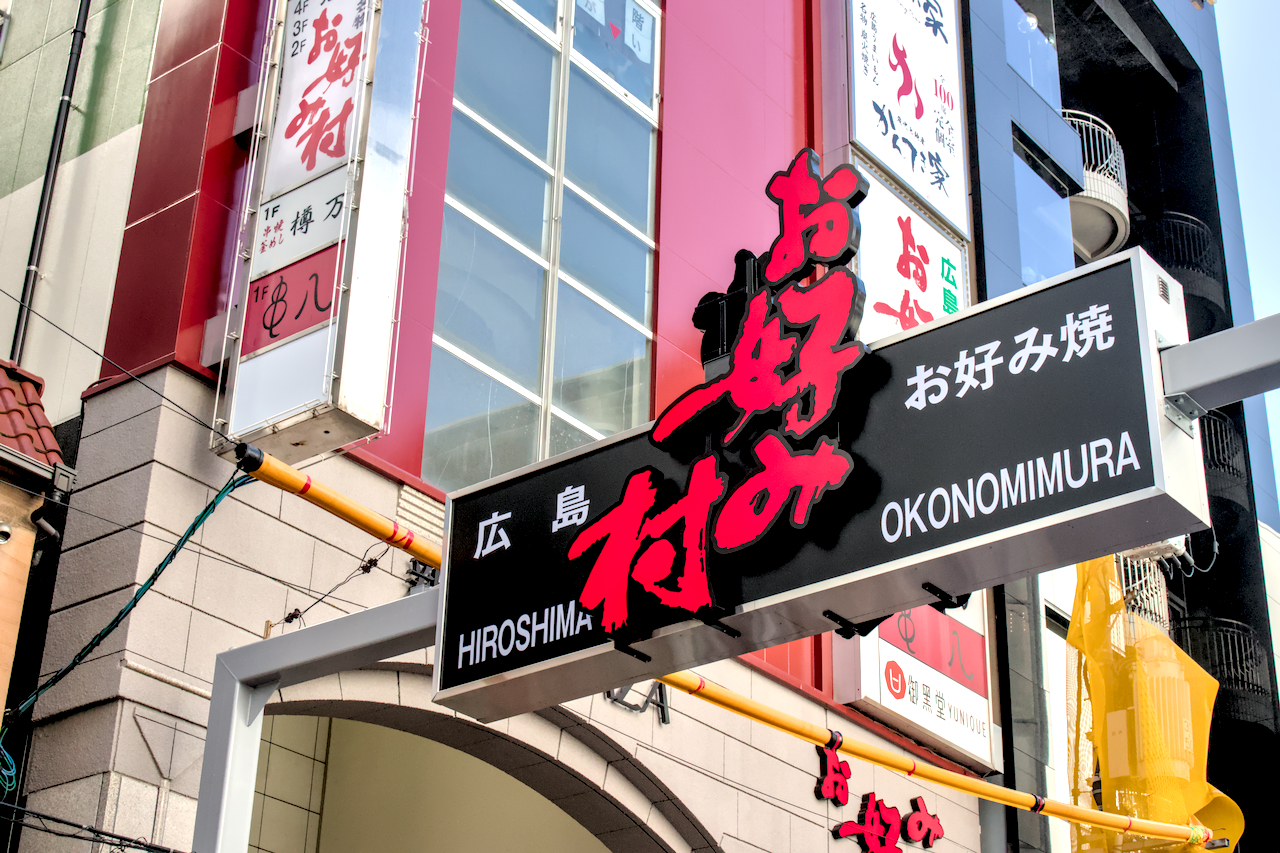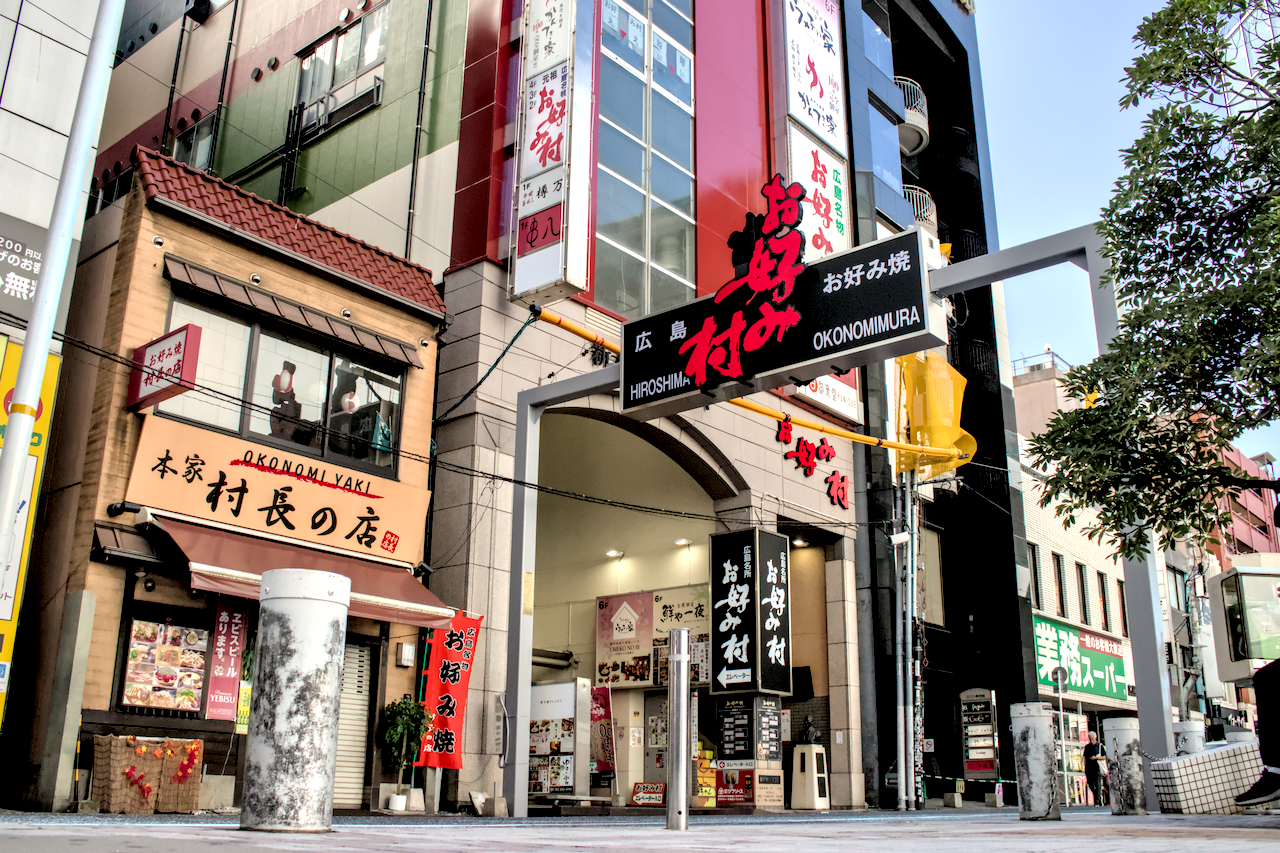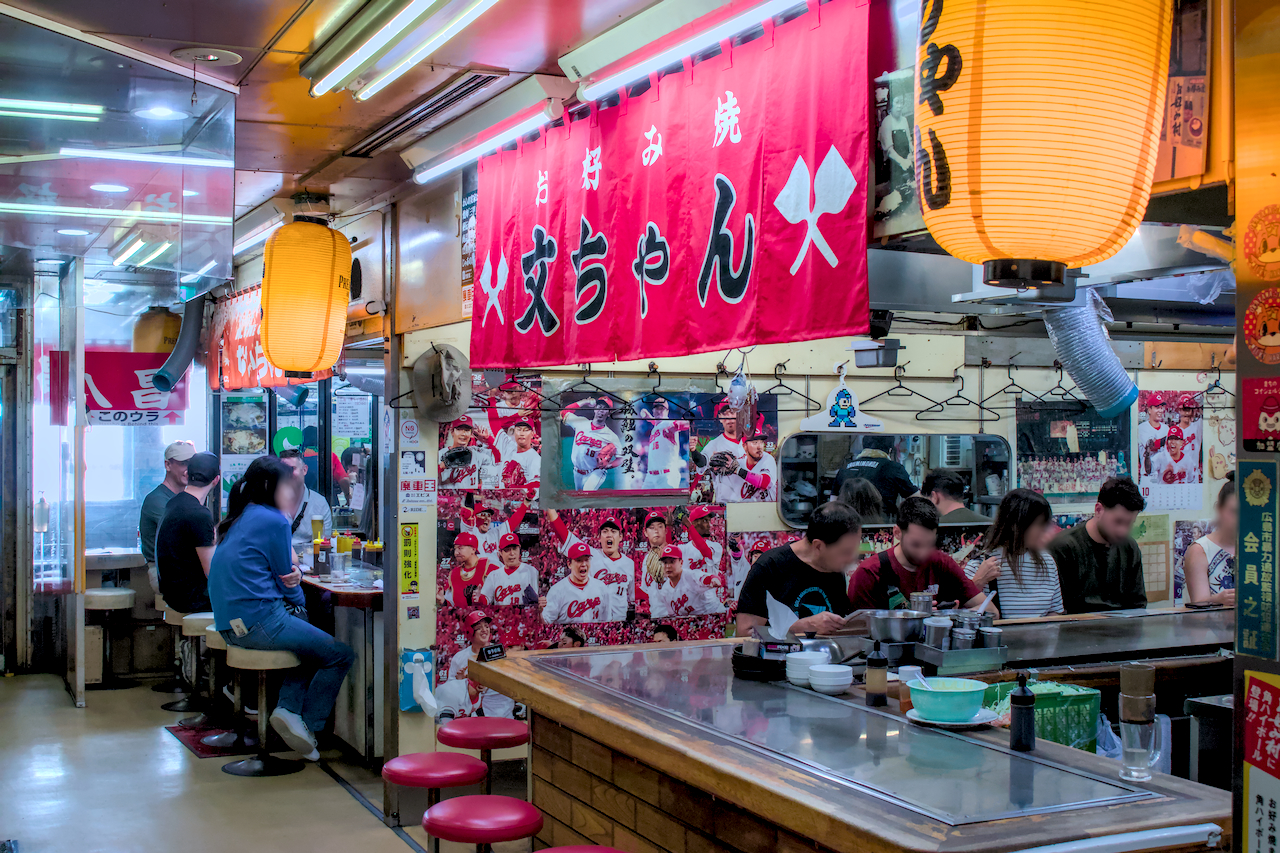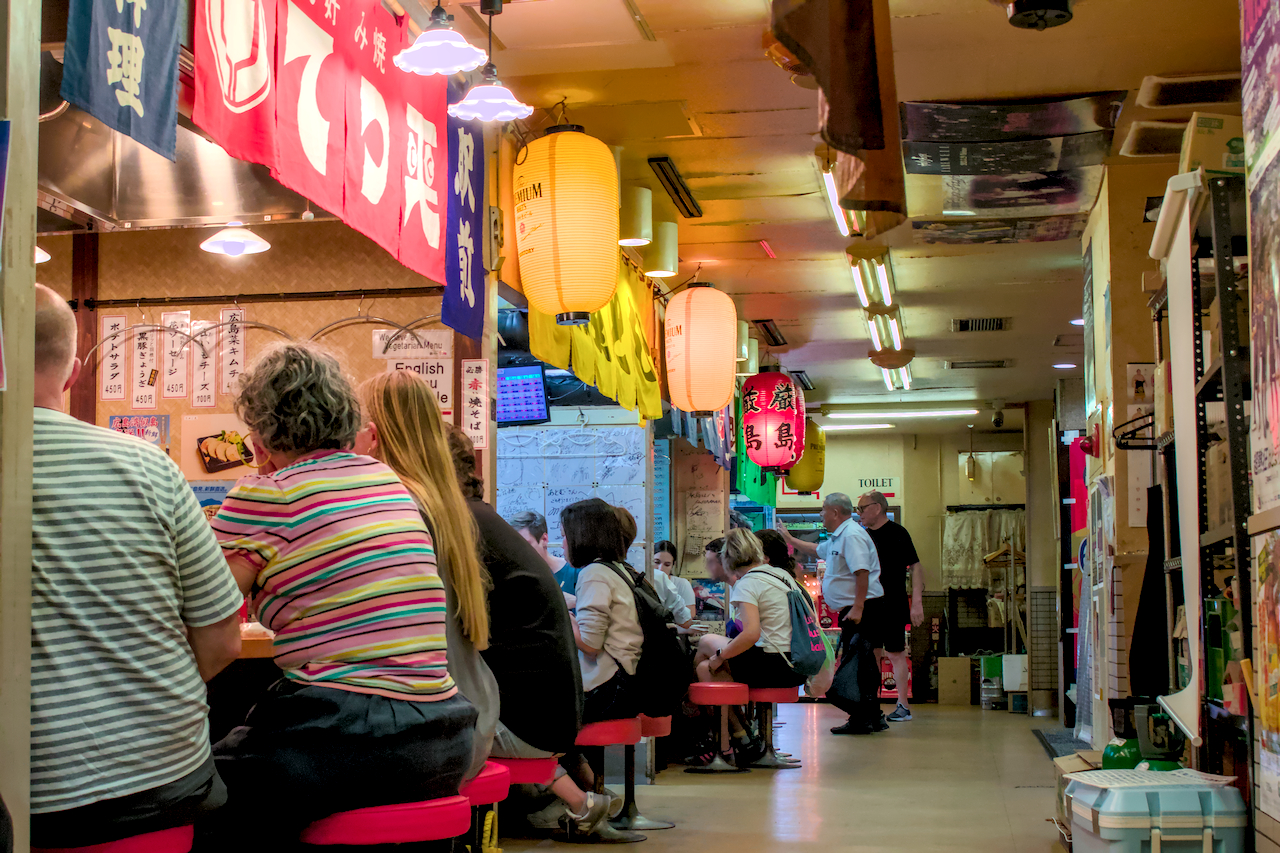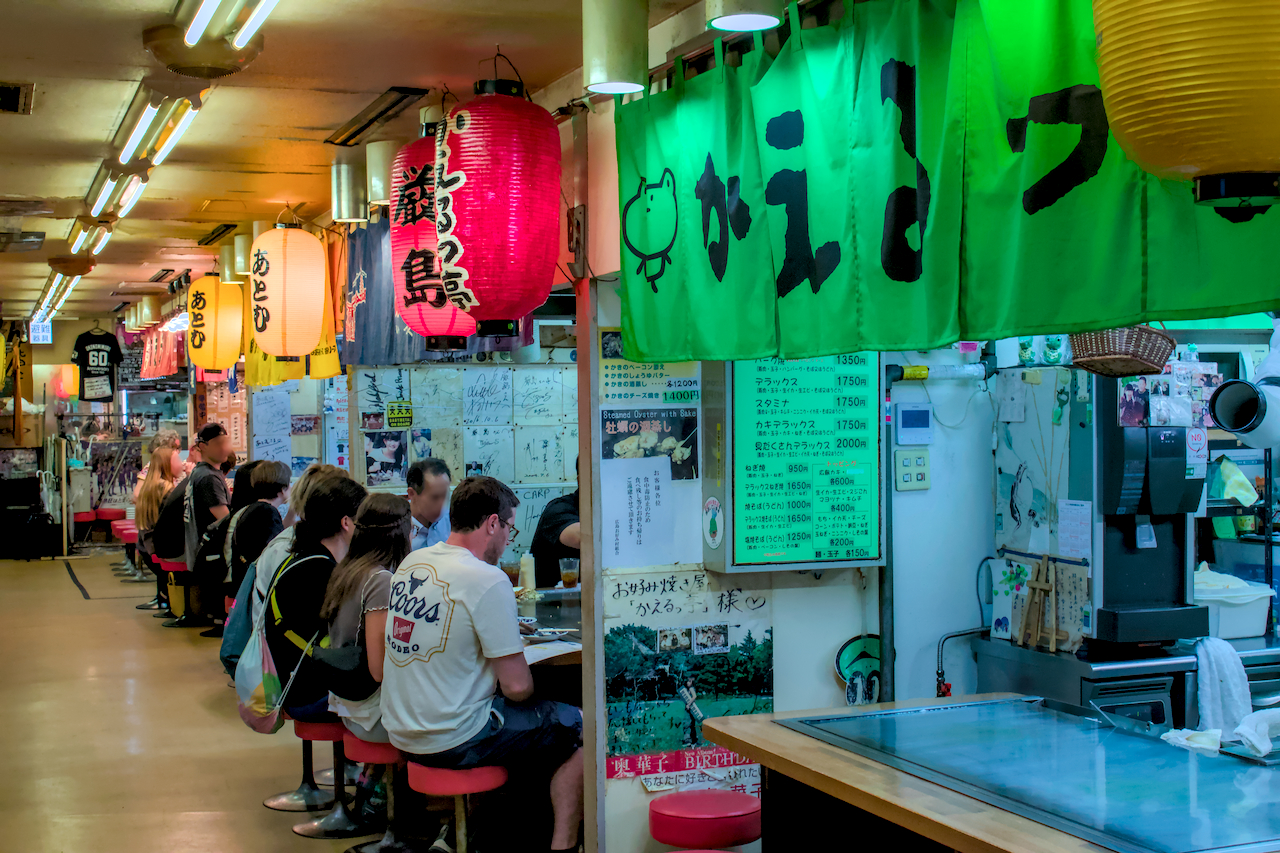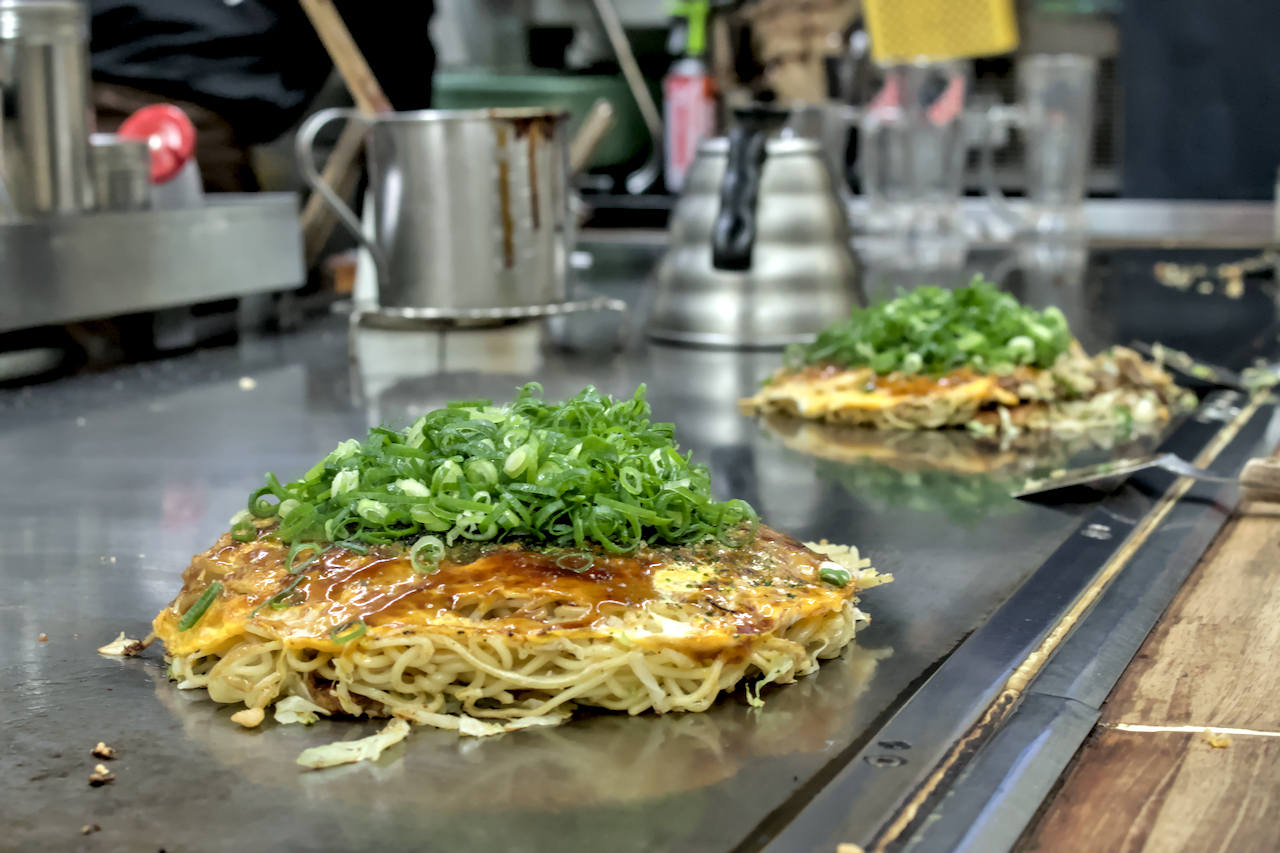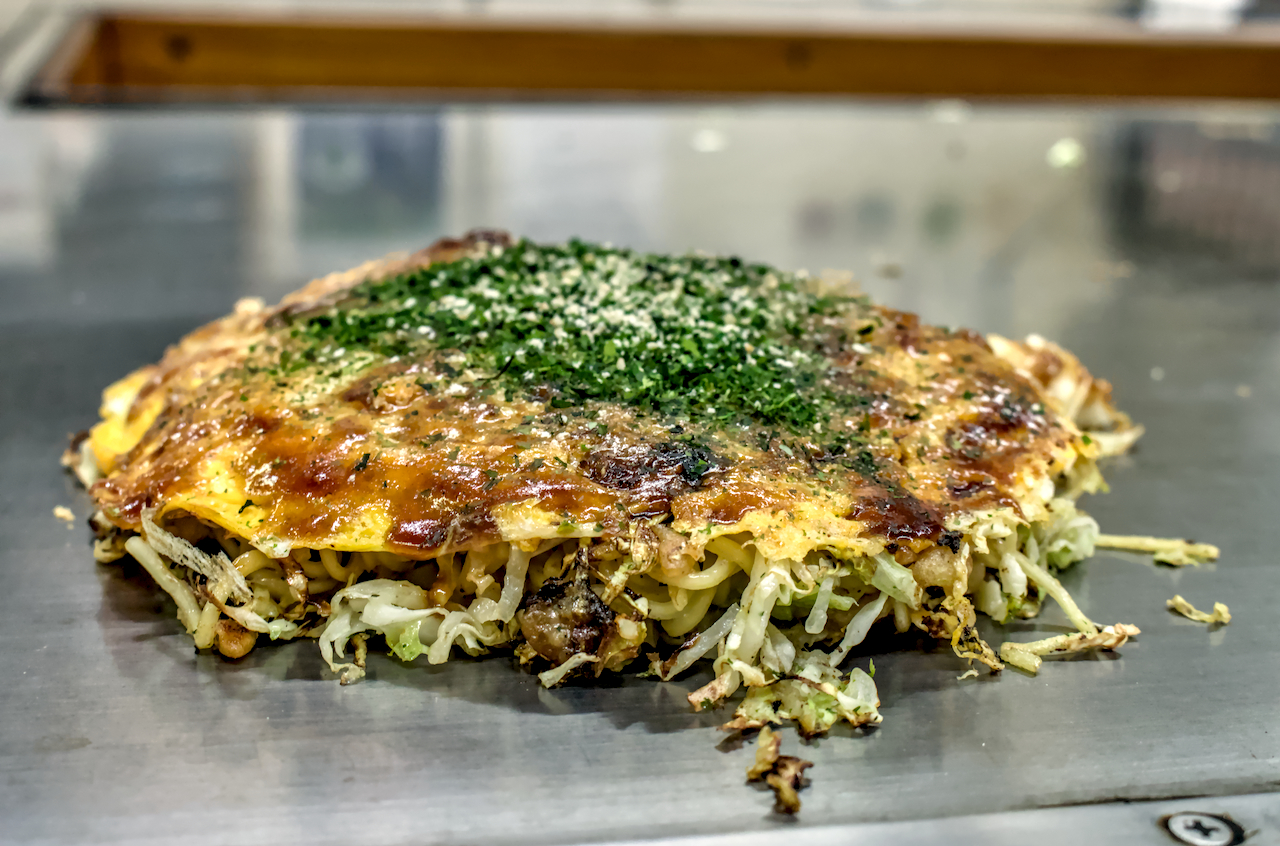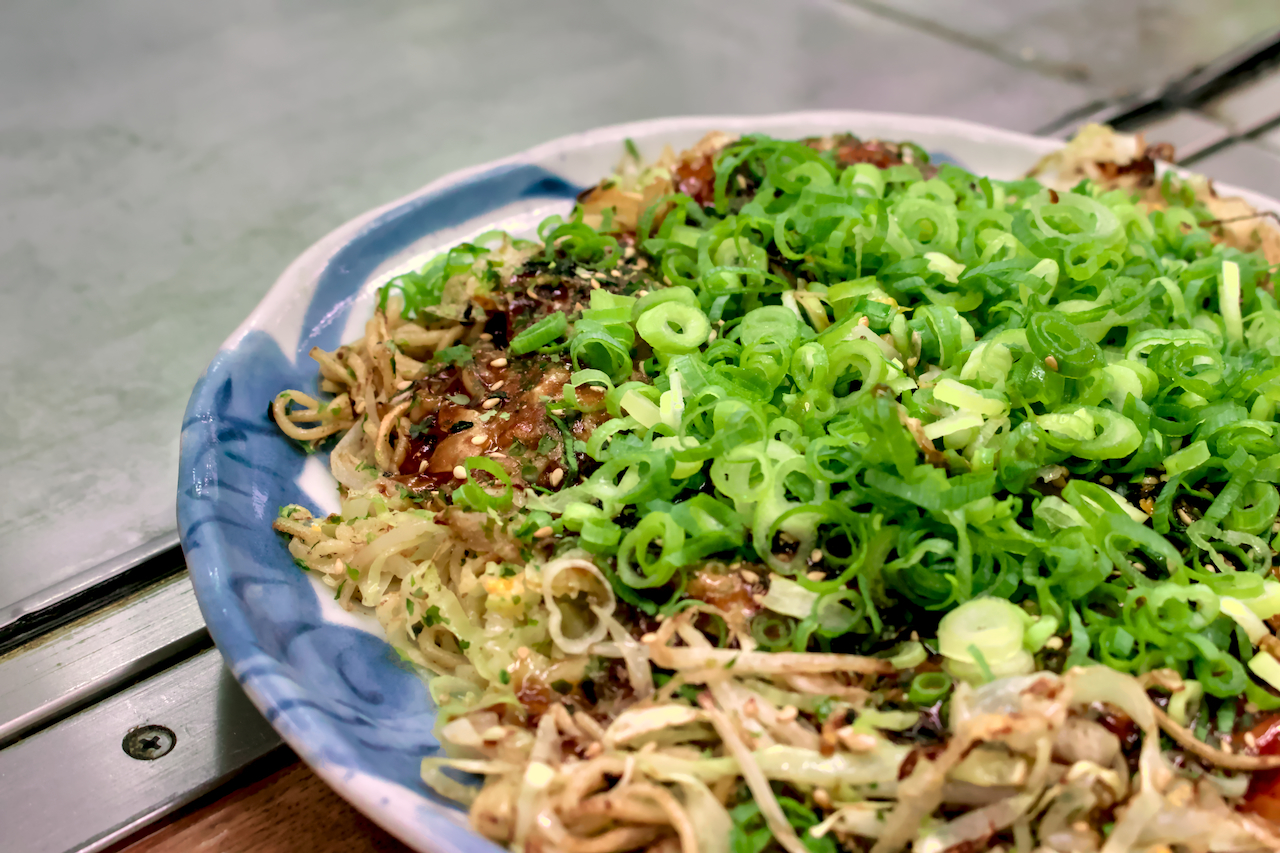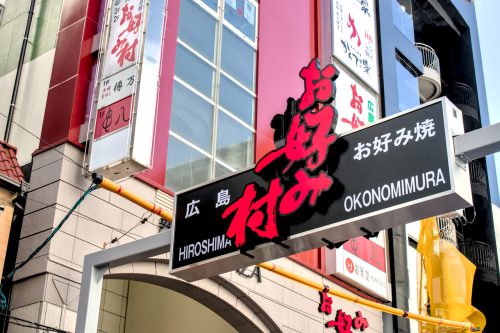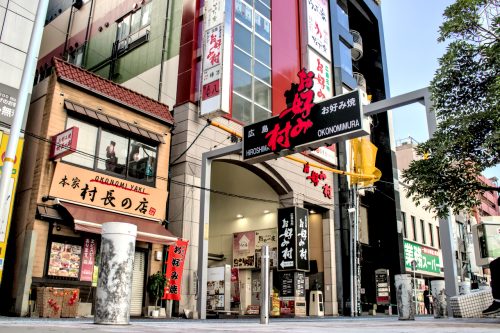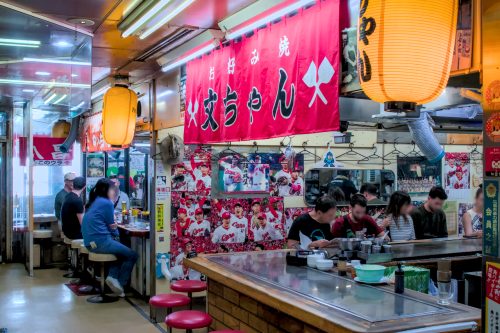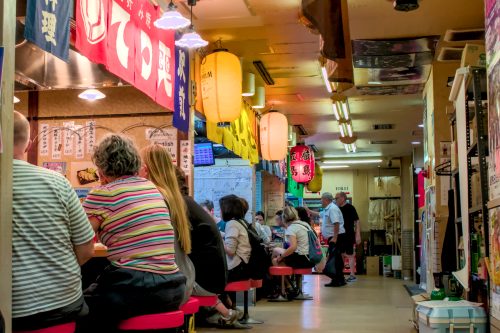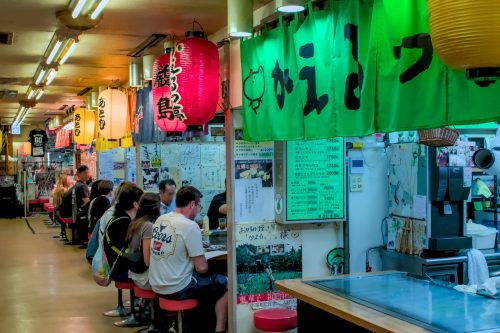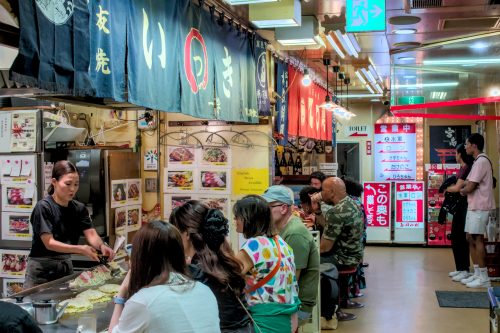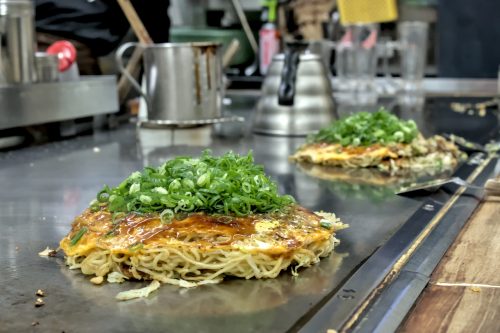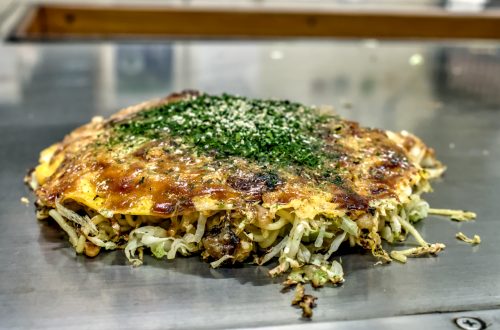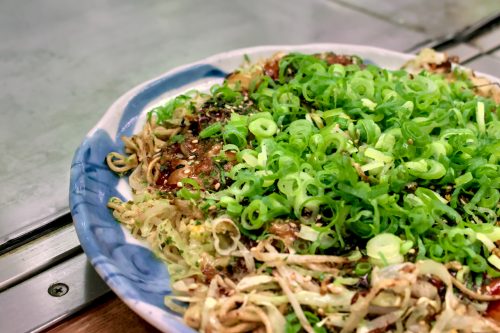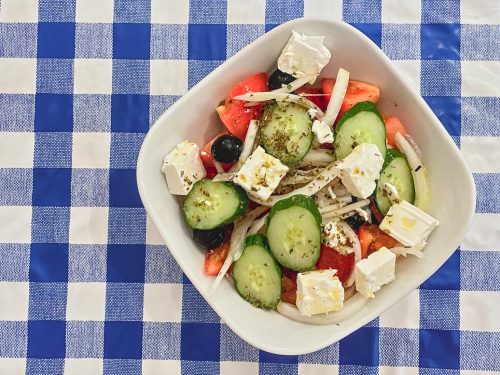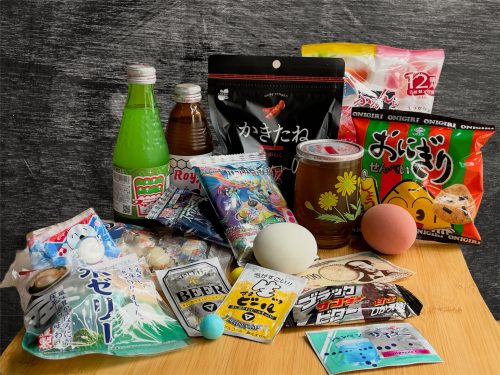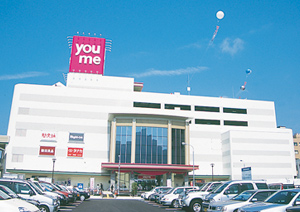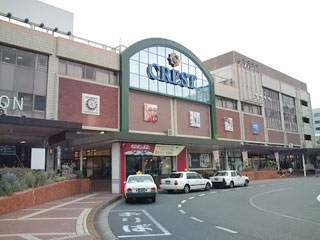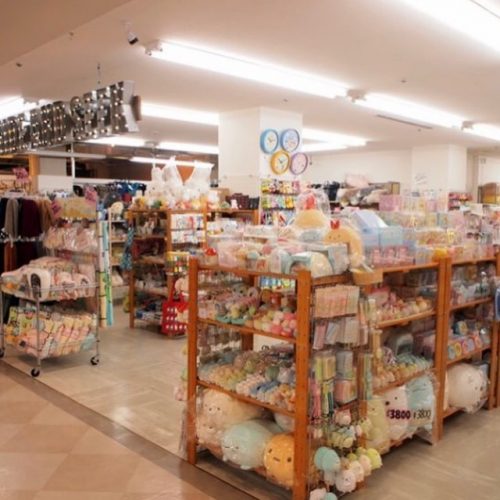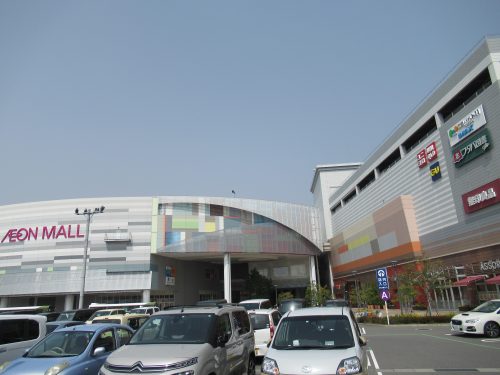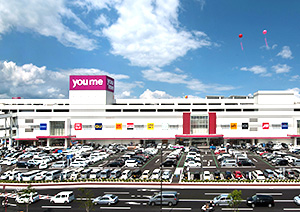Eat
Okonomimura – Hiroshima’s Cultural Okonomiyaki HQ
Hiroshima’s Okonomimura, “Okonomi Village” in English, is a seven-story building near Parco filled to the brim with vendors selling the exact same product: okonomiyaki and teppanyaki with alcoholic beverages and soft drinks. Pretty much every store inside has a history behind it, and while some establishments’ okonomiyaki may taste better than others’, you won’t find a terrible okonomiyaki here. Lots of locals swing by during lunch breaks or on the way home from work, and some undoubtedly have found a store that they swear by.
The modern seven-story building is the cultural headquarters of Hiroshima style okonomiyaki, a dish the locals like to
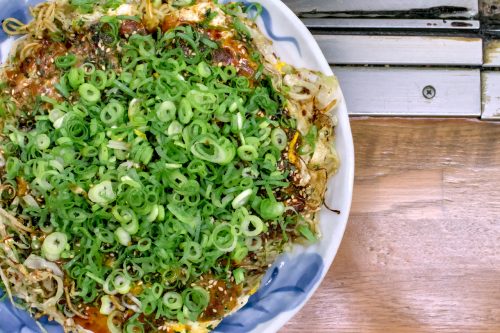
The “Tabete Minsai-yaki” okonomiyaki from Kaeruttei. Owner, Reiko Hirata, says they use Marubayashi noodles. Marubayashi is a Hiroshima-based noodle company that has been making noodles since 1948. (Joy Photo / Michael Farrell)
call “Hiroshima’s soul food.” It is the direct descendant of the 1950s era street-food bazaars that once filled Nishi Shintechi Square—the modern Alice Garden plaza, right next to Okonomimura. Back then, up to 50 food stands filled the square selling mostly okonomiyaki on griddles pulled out of the rubble.
Okonomiyaki is the city’s reconstruction food. It grew out of the ashes of the atomic bomb as people scrounged to reassemble their lives and put food on the table. After the bomb, as lives started coming back together, people started innovating on a popular pre-war snack known as issen yoshoku—literally “one hundredth of a yen Western food.” Issen yoshoku was a flour-based batter cooked with dried shrimp, onions and various condiments. On top of this, locals began layering whatever they had on hand. In fact, the name “okonomiyaki” translates to “fried whatever-you-like.” With wheat flour plentiful from U.S. aid, wheat soba noodles became a popular addition. Cabbage, a source of vitamin C and an easy vegetable to grow, also became an essential ingredient. Eventually strips of pork were added along with eggs and a thick, brown sauce.
A solace and a rock in hard times, okonomiyaki was massively popular, becoming synonymous with reconstruction and Hiroshima’s enduring spirit. “[Nishi-Shintenchi Square] was lively until late at night, with people coming after work, taxi drivers, and newspaper workers,” Kyoko Okita told the Chugoku Shimbun in 2023. Okita, 82 when she spoke to the paper, helped out at the original Rei-chan okonomiyaki stall, now located in Hiroshima Station.
It was during this time that the writer, Minoru Kida, saw the vibrant scene of glowing food stall tents clustered together in Nishi-Shintenchi Square and exclaimed, “It’s just like an okonomi village,” and the name was born.
However, in 1965 Nishi-Shintenchi Square was closed to street vendors to crack down on unauthorized shops and late-night noise. The shops needed a place to go. Many of them moved into the first Okonomimura building, built the same year. It quickly became a hit and even attracted school groups and visitors from other cities when they came to tour Hiroshima.
Due to safety concerns, the original building was closed in 1990. The current building, Shintenchi Plaza, opened in 1992
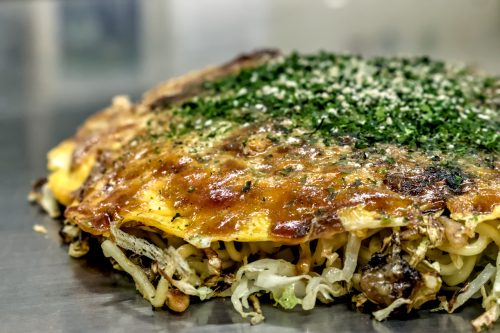
Close up of “The Hiroshima Special” from Sarashina. Sarashina’s okonomiyaki is unique for using fish powder and dried seaweed to season their okonomiyaki. (Joy Photos / Michael Farrell)
in the same spot. And just as the original street food bazaar included a variety of restaurants, not all the shops in Okonomimura are okonomiyaki shops. The 1st floor includes an oyster bar, an izakaya and a beef bowl shop. The upper floors typically house izakayas. However, as the core has always been okonomiyaki, the 2nd through 4th floors are filled with 25 different okonomiyaki shops, some of which, like Sarashina (founded in 1951), can trace their origins to the original street food stands in Nishi-Shintenchi Square.
Currently, the 6th and 7th floors of Shintenchi Plaza do not have active businesses.
In 2025, Okonomimura celebrates its 60th anniversary — carrying forward a legacy of survival, ingenuity, community, love and joy from the survivors of the unimaginable.
If your travel plans don’t take you into downtown Hiroshima, and you still want to try Hiroshima style okonomiyaki, there are many options around Hiroshima Station, like Rei-chan, a Shintenchi original shop, located on the 1st floor of the station’s Ekie Dining area. And then there is Okonomi Story Ekimae Hiroba, a modern recreation of the old okonomiyaki street food stands. It can be found on the 6th floor of the Hiroshima Full Focus Building across from Hiroshima Station.
Additional reporting by Kevin Peng

- Open
- 11:00 - 21:00
- Closed
- Never closes
- Price Range
- ¥1,000 to ¥2,000
- Smoking
- Smoking rooms available inside
Moment of Joy
Visitors to Okonomimura can take the flavor of their experience home in a bottle. Okonomimura shops use a unique, local brand of okonomiyaki sauce called “Mitsuwa Okonomiyaki Sauce.” It is produced by the Hiroshima-based sauce company, Sunfoods, which has been making condiments since 1916. And you can buy the sauce as a souvenir at the Don Quijote discount store when you visit. It’s located just a building away on the same street.
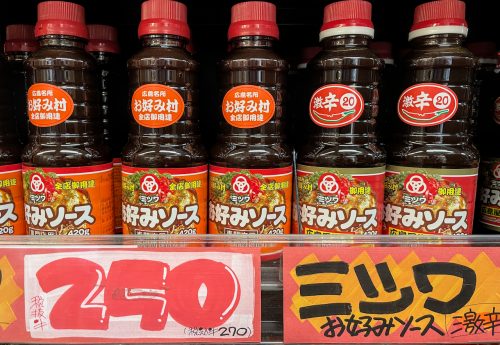
Mitsuwa Okonomiyaki Sauce, the sauce used at Okonomimura, is vegan friendly and available to buy at Don Quijote. (Joy Photo / Michael Farrell)


